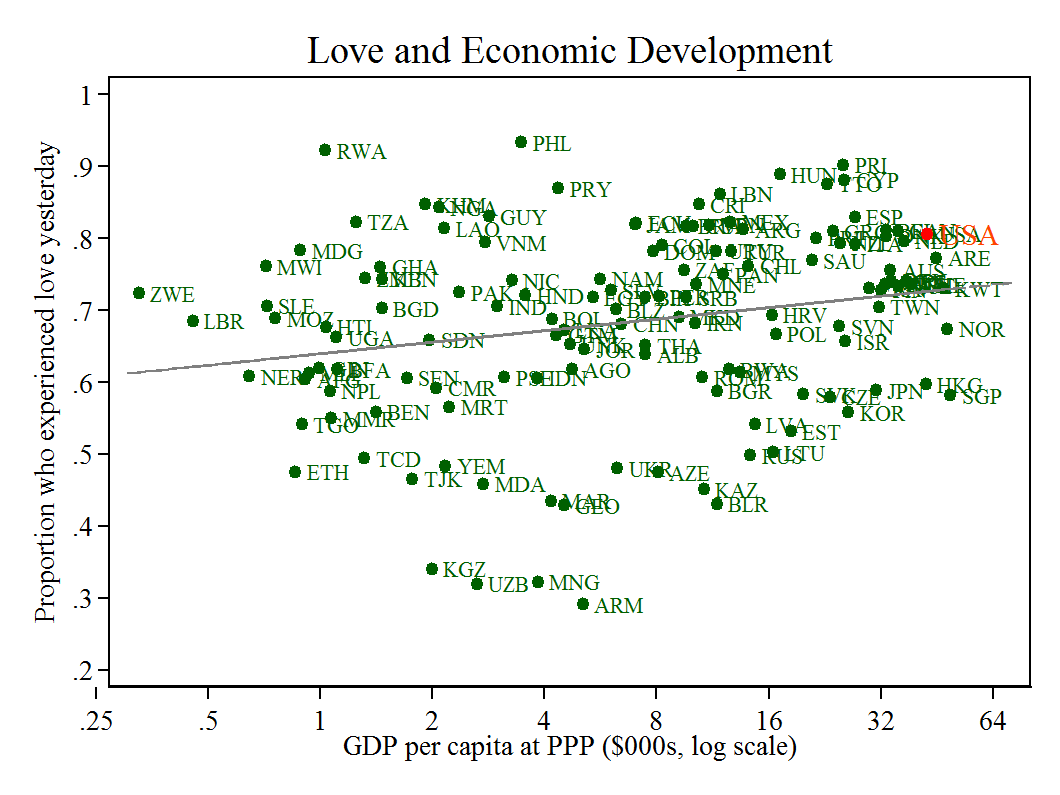Crunching the Numbers on Love
I’ve spent the last few days crunching data from the largest-ever international survey of love. Specifically, in 2006 and 2007, the Gallup World Poll went to 136 countries around the world and asked people, “Did you experience love for a lot of the day yesterday?” Betsey Stevenson and I report our initial analysis of the data in our latest column. A snippet:
The good news: Ours is a loving world. On a typical day, about 70 percent of people worldwide reported a love-filled day. In the U.S., 81 percent felt love… Across the world as a whole, the widowed and divorced are the least likely to experience love. Married folks feel more of it than singles. People who live together out of wedlock report getting even more love than married spouses… If you’re young and not feeling all that loved this Valentine’s Day, don’t despair: You’re not alone. Young adults are among the least likely to experience love. It gets better with age, ultimately peaking in the mid-30s or mid-40s in most countries before fading again into the twilight years.
We’ve also compiled a Global Love Ranking. You’ll learn, among other things, that the Philippines is the most love-struck country of all, and on any given day, 93 percent of its citizens say they experienced love yesterday. The US comes in at 26th, my native Australia is 44th, and the Armenians are dead last, with fewer than one-in-three experiencing love.
Here’s my Valentine’s Day Challenge: What explains the incidence of love around the world? I’m interested in charts, regressions, narratives, and conjectures. Either respond in the comments below, or play along on Twitter, using the hashtag #lovedata. I’m sure we can rustle up some swag for the best analysis.
I should warn you, it’s harder than it looks. For instance, here’s my first attempt at explaining the data, simply using GDP per capita:

While the relationship in this chart is statistically significant, it explains very little of what’s going on. I’m sure you can do better though, which is why I’ve published the full spreadsheet, complete with 3-letter international country codes (all the better for merging on new explanatory variables), in a Google Doc.
So, what explains love? And just as importantly, what doesn’t?

Comments